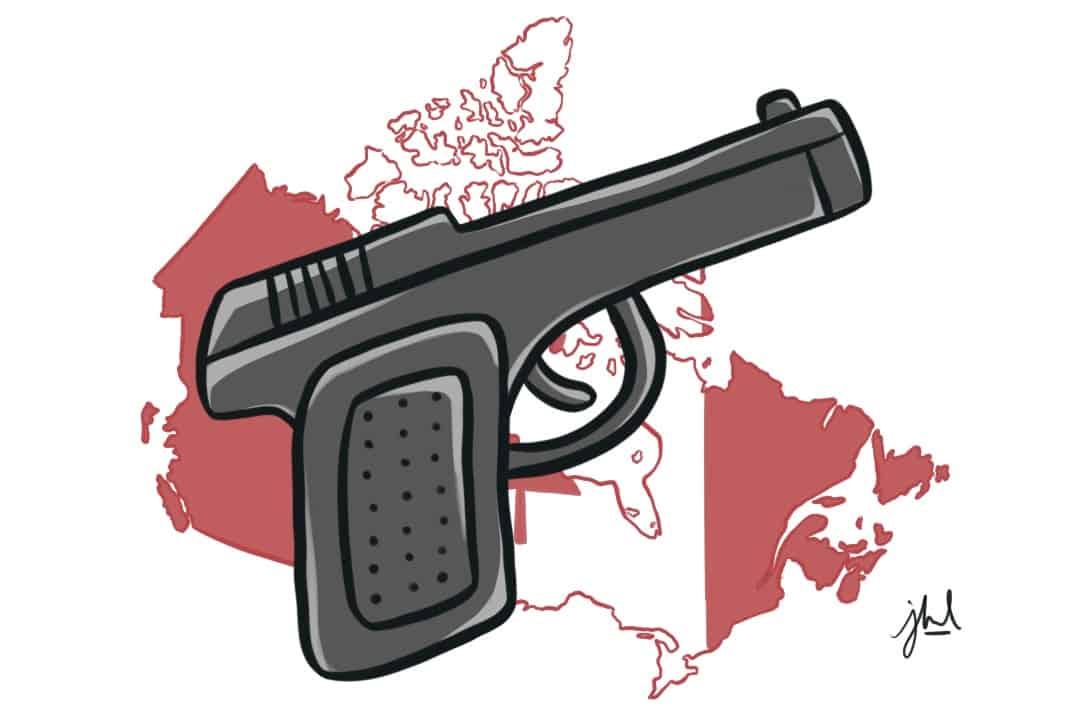As always, summer breathes new life into the city. Through cracks in the trees, sunlight falls delicately onto city sidewalks. The air, chock-full of earthy freshness and sharp heat, pulls the city into a quiet lull that, as the night wears on and the heat turns to humidity, grows louder and louder, reverberating through the hot concrete that seemingly connects the city to itself.
However, on certain Toronto streets — lined still with that hot, humid concrete — summer breathes life into something different. Here, the romantic summer backdrop is something darker. With the recent shootings, it’s clear that Toronto’s ongoing issues of gun violence, youth violence, and youth gangs are gruesomely being put on display.
This year, Father’s Day saw four separate shootings in Toronto within a six-hour time span. One of these shootings, involving a 15 year old and a 17 year old, showcases the concerning trend of youth involvement in gun-related incidents.
Focusing solely on the issue of guns is unproductive. To truly solve the issue of gun violence, we must acknowledge the interconnectedness of gun violence and gangs in Toronto.
Cities create neighbourhoods. Neighbourhoods may promote gang formation. Gangs then track guns and violence into the city. This is a simple breakdown of the cyclical nature of violence in Toronto, which mirrors other major cities that are dealing with similar issues, such as Los Angeles and Chicago.
With more and more recurrences, gun violence in Toronto is becoming seemingly perpetual. In part, Toronto’s proximity to the United States border is to blame. The United States’ gun culture may influence the people of Toronto’s willingness to use guns and engage in gun violence. This situation has been further exacerbated by the ease through which guns can be smuggled through the US-Canada land border. Yet, it is important to understand the City of Toronto’s hand in creating Toronto-specific gangs whose conflicts have manifested into city-wide gun violence.
Neighbourhoods with a high presence of youth gangs and instances of youth-gang violence all exhibit similar characteristics. According to the Toronto Gun and Gang Violence Report, these characteristics include systemic poverty, racism, high rates of mental health issues, substance use disorders, and social isolation from other neighbourhoods.
Interestingly, these characteristics are coupled with a lack of resources including accessible mental health and addiction treatment centres. In Toronto, such characteristics are most commonly found in the City’s public housing projects.
To socially isolated and marginalized youth, the lack of community centres has devastating effects. As gangs offer community, socialization, and an emotional outlet, youth turn to them as a means of emotional, physical, and social survival, thus fuelling the ongoing cycle of youth gangs and gun violence.
Toronto’s public housing projects are a failure in design, with Toronto’s residents falling victim to the City’s ill-advised urban planning and poor social resource implementation. Only 4 per cent of the City’s population lives on Toronto Community Housing Corporation (TCHC) properties, yet 19.6 per cent of the City’s shootings took place on TCHC properties in 2021.
Residents have cited that public housing breeds a certain mentality among its youth. From an early age, gang violence is glamourized and promoted, with rivalries between neighbourhood gangs frequently turning violent. The City’s ongoing ignorance regarding the well-being of both these areas and their residents allows for such violence to continue.
The shooting of 18-year-old Jaheim Robinson in Scarborough, Ontario showcases this to the fullest. Robinson, who was shot by a 14-year-old classmate, lived in an area in which social programming, community support, and youth resources were scarce. The COVID-19 pandemic only worsened the tough conditions in their neighbourhood. The City’s lack of attention or care in providing adequate resources to youth resulted in an influx of youth gang involvement and violence in the area.
Earlier this year, the Ontario government granted the Toronto Police Service $87 million to fight gun and gang violence. However, the Toronto Police’s main focus has been on guns being smuggled in from the US, with the issue of youth gang violence in Toronto going largely ignored. Further, a policing solution is not necessary — rather, a social and community-focused solution should be implemented.
The city’s inability to acknowledge Toronto’s growing youth gang issue is to blame for the ongoing gun violence in the city. Until the city of Toronto steps up and addresses the issue of Toronto’s youth gangs, gun violence is here to stay.


